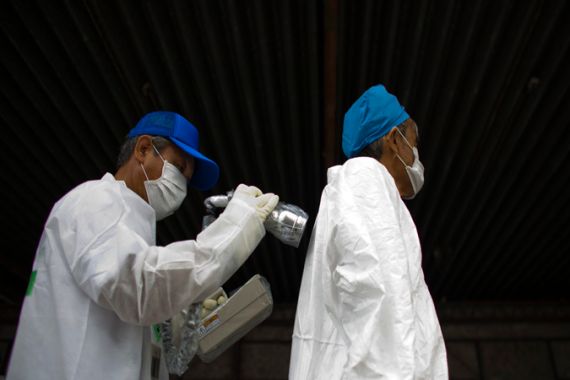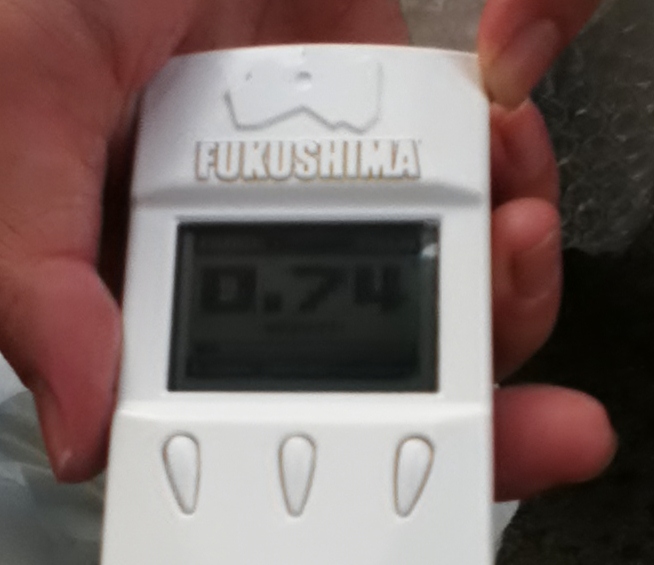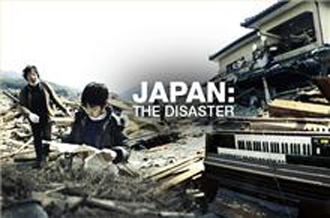Japan: Nuclear plant clean up to take decades
Japan says it could take 40 years to clean up the leaking nuclear plant, but is that going to make people feel safe?

 |
| Not waiting for government help, locals make their own Geiger counters and decontaminate soil [D. Parvaz] |
Nine months after the worst earthquake and tsunami to ever hit Japan, the rubble is still being cleared, but the issue of nuclear contamination will take decades to deal with.
Japan’s government on Wednesday announced that decommissioning the damaged and leaking Fukushima Daiichi plant will take three or four decades – that is just for the plant alone and not the surrounding areas, composed mostly of farmland.
Keep reading
list of 4 itemsCould shipping containers be the answer to Ghana’s housing crisis?
Thousands protest against over-tourism in Spain’s Canary Islands
Holding Up the Sky: Saving the Indigenous Yanomami tribe in Brazil’s Amazon
“The period of time it would take to decommission the plant should not have a direct bearing on when the evacuees will be allowed to return home,” Trade Minister Yukio Edano told reporters.
The Daiichi plant in Fukushima, operated by the Tokyo Electric Power Co. (TEPCO), was badly damaged by the March 11 earthquake and tsunami.
With its cooling system destroyed, the plant has been leaking radioactive substances into the sea as well as the soil and air. Experts have said that the contamination from Fukushima is worse than Chernobyl.
|
http://www.youtube.com/watch?v=IBkrIgJUWLk |
The government last week announced that reactors are in a state of cold shutdown, indicating that it was preparing to eventually decommission the plant.
According to the cleanup plan announced on Wednesday, crews will begin removing spent fuel from the plant before 2014. The timeline for removing melted fuel debris from the reactors is a decade, with a full decommissioning taking as long as 40 years.
While four decades seems like a long time, some think that estimate is unrealistically short, given the scale of the nuclear disaster at the plant.
“The forty year time frame seems very challenging,” said said MV Ramana, a researcher at Princeton University specialising in the nuclear industry and climate change.
While he said that there have been cases in the US where nuclear reactors have been decommissioned within that time frame, Ramana added that none of those reactors went through an accident on the scale of Fukushima – ranked level 7 on the International Nuclear Event Scale with fuel meltdown and contamination of the surrounding area.
The 40-year timeline is more in step with “normal reactors reaching the end of their economic life”, said Ramana.
“These would not have a mass of melted down radioactive fuel on their floors. Fukushima does not fit that description and so it could be very tough to do it in 40 years.”
Indeed, for those living with the reality of the meltdown in Japan, the Daiichi disaster seems endless.
“It looks too optimistic for many people. But nobody knows,” said Katsuyoshi Ueno, a photographer in Tokyo.
“For the majority it is just out of imagination. Who knows about 2041 or 2051? A lot of people question ‘Will I be alive when it’s completed?'”
Lives in limbo
About 80,000 people were evacuated from within a 20 km radius of the plant soon after the March disaster but some
of them may be allowed to return as early as next spring now that the cold shutdown has been declared.
Many of these residents were evacuated first to emergency shelters, such as school gymnasiums, and then moved to temporary, prefabricated housing, where they must pay for utilities and food – a hardship for many as they have lost their jobs and are still paying mortgages on their empty homes.
Ueno told Al Jazeera that many of the evacuees from contaminated areas don’t feel safe to return, but financial concerns are forcing some to move back.
He said there’s little sympathy for evacuees in the capital.
“…[I]n Tokyo [people] think without reason that it would be the best for evacuees to move back, because it is too obvious that nobody wants to abandon his/her home,” said Ueno, adding that there’s also a sense of denial, and people “remain adamant as if nothing is wrong”.
 |
| Read our complete coverage of the March 11, 2011 earthquake, tsunami and nuclear meltdown |
For the evacuees, staying put in temporary housing has been tough as compensation has been slow. Al Jazeera reported in September, six months after disaster struck, that some evacuees had received just $13,000 in compensation from TEPCO – a pittance in Japan, where the cost of living is among the highest in the world.
Some of the most contaminated areas, such as Iitate, within Fukushima prefecture, are being hosed down, their soil and sod packed into bags. Officials told Japanese media that farms there will be decontaminated within five years.
Telling evacuees to wait that long is problematic as they have to make a living in the meantime, and compelling them to return to contaminated areas is equally fraught.
The Los Angeles Times reported earlier this month that there is already pressure for the residents of Minamisoma – roughly 25 km north of the leaking nuclear plant – to return. The push from the town’s outspoken mayor, Katsunobu Sakurai, has caused a furor.
Adding fuel to the fire are claims that government safety precautions – including the radius of evacuation zones – are random and ineffective.
“It’s almost like they’re living inside a nuclear plant,” said journalist Tomohiko Suzuki, referring to those living just outside places such as Iitate village. Suzuki went undercover at the Daiichi plant and presented his findings at the Foreign Correspondents’ Club of Japan on December 15.
Deep mistrust
Doubts also linger about whether the cold shutdown announcement was too hasty, and whether the reactors and their contamination have really been contained.
“The Japanese government admits that they do not have enough technology for the plan,” said Kazuo Hizumi, a human rights lawyer and an editor at News for the People in Japan, a news site advocating for transparency from the government and from TEPCO.
He told Al Jazeera that people are bewildered at the 40-year forecast and have repeatedly called for the arrest of TEPCO executives.
“I am worried we cannot get enough information from the government and TEPCO, because they stopped the regular press conference held when the government declared cold shutdown … was achieved.”
Even though Edano has said that TEPCO would “naturally shoulder the cost” of the cleanup and compensation, both the government and the energy company are on the hook.
The compensation payments and cleanup costs saddling TEPCO could endanger its position as an independent firm as the stricken utility may need huge injections of public cash. The government plans to take a stake of more than two-thirds in TEPCO in a de facto nationalisation of the utility, the Yomiuri newspaper said on Wednesday.
An official advisory panel has estimated it may cost about $15bn to decommission the plant, though some experts put it at nearly three times that amount.
The Environment Ministry says about 2,400 square km of land around the plant may need to be decontaminated and the cost is sure to be enormous.